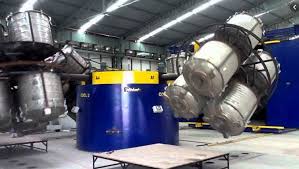Breaking Boundaries: Pushing Design Limits with Rotational Molding
Rotational molding, a producing method traditionally used for developing hollow plastic merchandise, takes a sensitive equilibrium of art and science to attain ideal effects. Here’s a greater leap into the complexities of mastering this revolutionary procedure:
Improving Fabric Selection:
Selecting the best fabric is essential for successful rotational molding. Variables such as UV resistance, chemical compatibility, and mechanized components has to be deemed in accordance with the product’s meant software. Polyethylene remains to be the most often employed material because of its overall flexibility, sturdiness, and expense-performance.
Perfecting Mildew Design:
Mold design and style performs a crucial part in rotational molding. Attaining uniform walls fullness, correct draft perspectives, and sophisticated characteristics demands careful consideration during the design phase. Sophisticated CAD application and simulation equipment help designers optimize fungus geometry for max productivity and portion high quality.
Great-Adjusting Process Parameters:
Handling process parameters including heating system temp, rotational pace, and chilling time is important for creating higher-high quality pieces. Accurate temperature control ensures steady substance stream and syndication, although best rotational speed helps prevent materials pooling and unequal wall structure fullness.
Employing Top quality Assurance Actions:
Top quality guarantee is essential to the rotational molding method. Examination tactics like ultrasonic screening, graphic inspection, and pressure evaluating support identify disorders at the start of the production pattern, ensuring that only components getting together with strict quality criteria are transported to buyers.
Embracing Creativity:
Steady development pushes developments in rotational molding technology. From automation and robotics to lasting resources and ingredient developing techniques, adopting technologies increases procedure performance, reduces guide periods, and increases the options for merchandise changes.
Collaborating Across Disciplines:
Productive rotational molding requires cooperation across numerous disciplines, which include design, engineering, supplies research, and production. By cultivating interdisciplinary teamwork and knowledge discussing, manufacturers can influence collective experience to get over problems and generate creativity.
Purchasing Education and Education:
Education and education and learning are crucial for creating competent specialists capable of understanding the skill of rotational molding. Palms-on instruction courses, workshops, and market certifications inspire individuals with the data and expertise found it necessary to succeed in this professional field.
Summary:
Understanding the skill of Rotational Molding needs a holistic method that involves substance choice, mold layout, process search engine optimization, quality certainty, advancement, cooperation, and ongoing training. By adopting these concepts and continuously improving their strategies, suppliers can open the entire potential of rotational molding and provide exceptional products which satisfy the changing requires of consumers and sectors.


